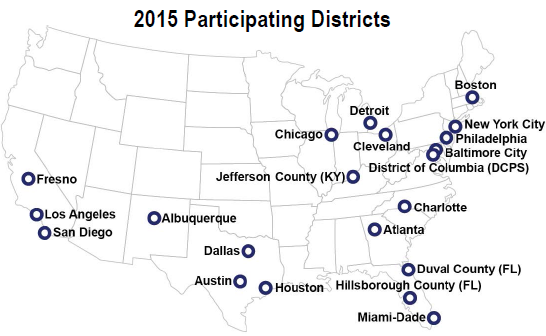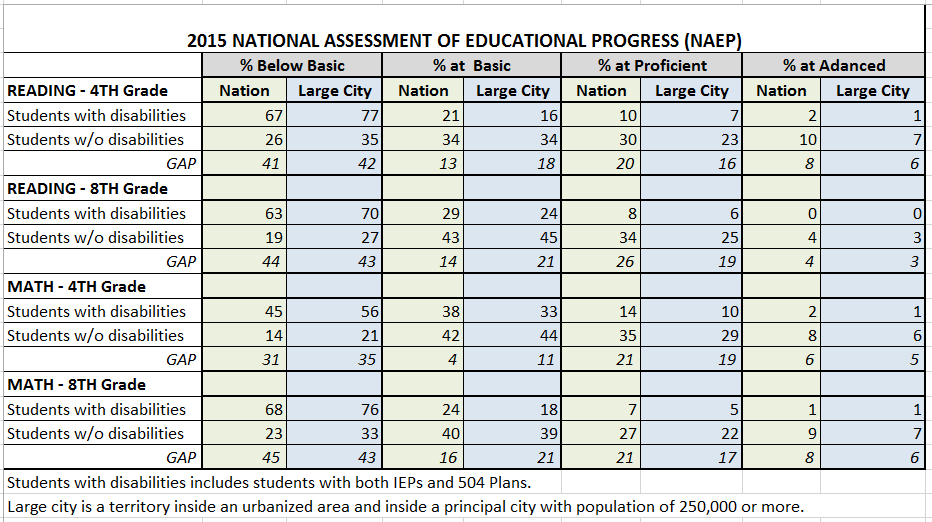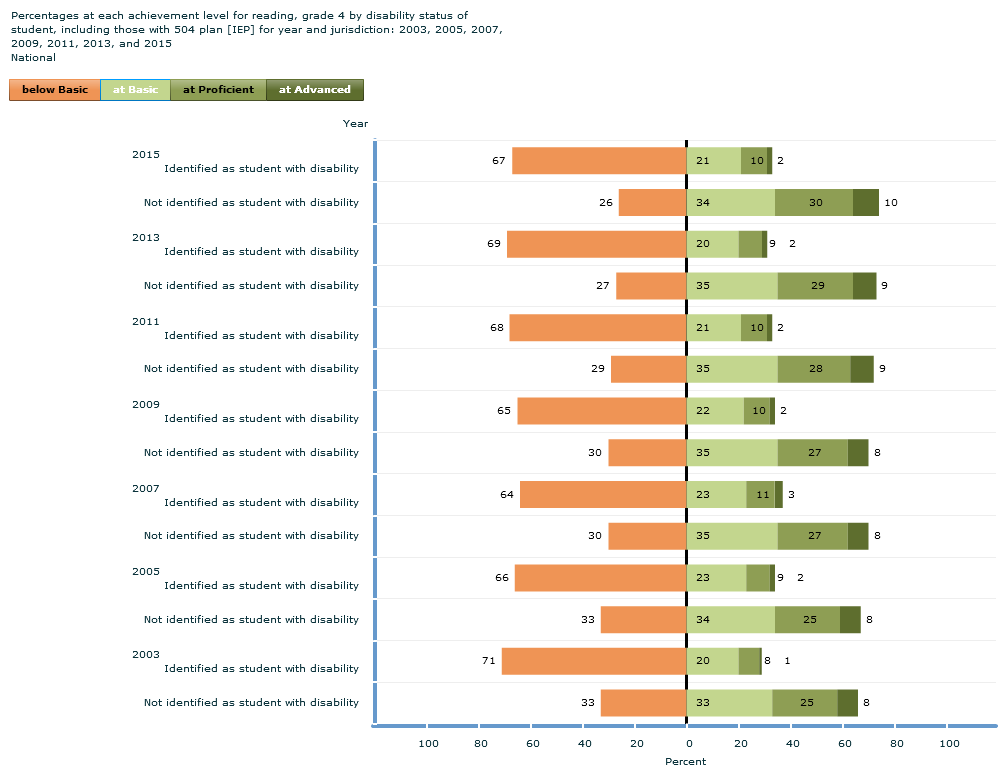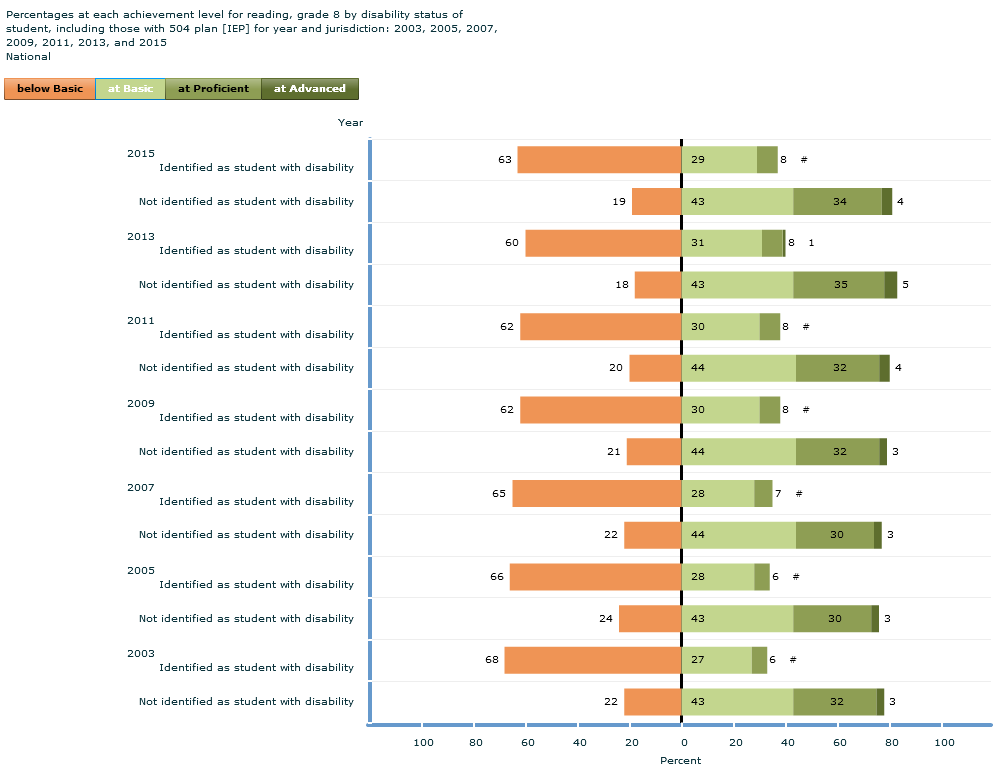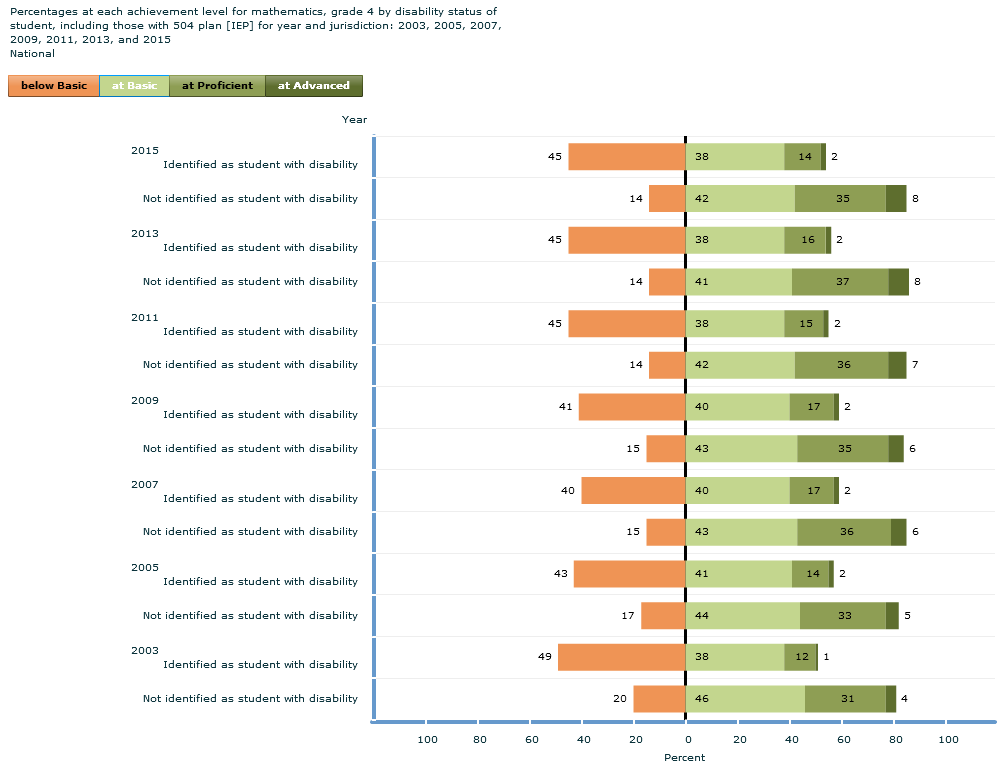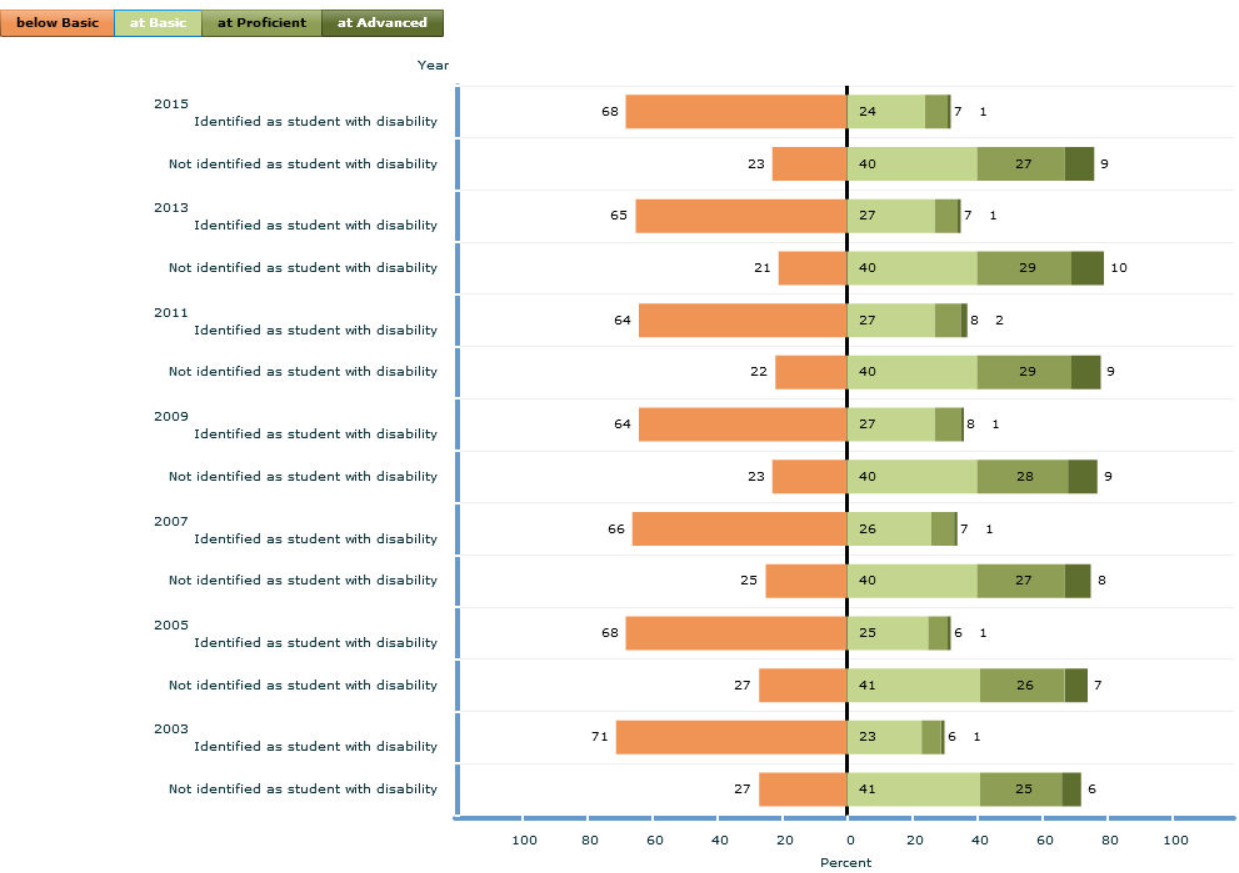TUDA Spells Tough Times for Students with Disabilities in Many Large Urban Districts
Along with the results of the 2015 NAEP for states and the nation, the results of the 2015 TUDA – the Trial Urban District Assessment were released on October 28, 2015. (We blogged about the release of the NAEP at the state and national levels earlier.)
The TUDA reports the reading and math achievement of public school students in 21 urban districts at grades 4 and 8. Results are broken down by racial/ethnic groups as well as special populations, such as students with disabilities and students eligible for free/reduced-price lunch meals. The TUDA was established in 2002 to support the improvement of student achievement in the nation’s large urban districts. Districts eligible to participate in the TUDA assessments must be large cities with a population of 250,000 or more in addition to having a majority (50 percent or more) of their student population being Non-White (Black or Hispanic) or eligible for the National School Lunch program. Students in the TUDA districts represent nearly one-half of the students who attend schools in large cities nationally.
The districts that participated in the 2015 TUDA are shown in the map below.
Map reads: 2015 Participating Districts were Albuquerque, Atlanta, Austin, Baltimore City, Boston, Charlotte, Chicago, Cleveland, Dallas, Detroit, District of Columbia (DCPS), Duval County (FL), Fresno, Hillsborough County (FL), Houston, Jefferson County (KY), Los Angeles, Miami-Dade, New York City, Philadelphia and San Diego.
The achievement of students with disabilities (which includes students with IEPs and 504 Plans) varied substantially across the 2015 TUDAs. The nationwide achievement levels and the Large City achievement levels appear in the table below.
HIGH PERFORMING DISTRICTS. When comparing the achievement of students with disabilities in the TUDAs to that of Large Cities, a few districts stand out as doing exceptionally well. In Reading, these districts are Duval County (FL), Hillsborough County (FL) and Miami-Dade (FL). In Math, these districts are Austin, Boston, Duval County (FL), Hillsborough County (FL) and Miami-Dade (FL).
POOR PERFORMING DISTRICTS. When comparing the achievement of students with disabilities in the TUDAs to that of Large Cities, a few districts stand out as exceedingly poor performers. In Reading, these districts are Albuquerque, Baltimore City, Cleveland, Detroit, Los Angeles, and Philadelphia. In Math, these districts are Albuquerque, Atlanta, Baltimore City, Chicago, Cleveland, Detroit, Fresno, Los Angeles, and Philadelphia.
The performance of students with disabilities compared to those without disabilities in each of the participating districts is shown below.
READING GRADE 4 (Click here to view this table as a chart)
READING GRADE 8 (Click here to view this table as a chart)
MATH GRADE 4 (Click here to view this table as a chart)
MATH GRADE 8 (Click here to view this table as a chart)
SEE ALSO: Blog on 2013 TUDA
